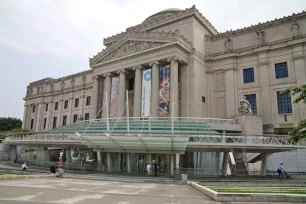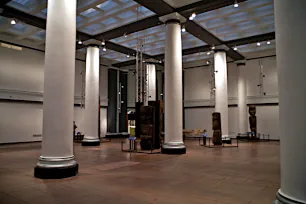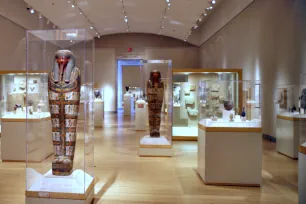The Brooklyn Museum is considered one of the best art institutions in the United States.
History of the Museum

The Brooklyn Museum was originally conceived as the Brooklyn Institute for Arts and Sciences, the focal point of an educational complex planned in the nineteenth century for the growing city of Brooklyn, which would eventually include the Brooklyn Botanic Garden, the Prospect Park Zoo, and the Central Library. The idea was to create a museum six times the size of what was eventually built, but the ambitious plans were shelved when Brooklyn became a borough of New York City in 1898.
The Building


The Beaux-Arts building in which the current Brooklyn Museum stands was based on the design plans of the prestigious New York architectural firm of McKim, Mead, and White. The 560,000 square foot (52,000 sq. m.) building has had numerous additions and alterations during the last century, including the demolition and replacement of the grand front staircase and the dismantling of the original auditorium.
In the 1950s, renovations to the center pavilion and the rotunda involved removing all of their Beaux-Arts decorative detail along with their columns, much to the chagrin of many fans of this ornate building.
In 1977, ground was broken for a new portion of the museum. The Education Division building, a modern structure, opened in 1980. It houses offices and classrooms, and there’s enough room inside for a new auditorium when needed. This building was designed by Prentice and Chan, Ohlhausen Architects.
Inside the Museum
The Brooklyn Museum owns one of the largest and most diverse art collections in the U.S., some 1.5 million pieces in all, spanning the centuries from Ancient Egypt to the contemporary art of today.


It had African art on display as early as in 1923, well before most other museums started with African art collections. The museum is especially known for its extensive collection of seventeenth through nineteenth century paintings.
Galleries within the museum include Arts of Africa and the Pacific Islands; American Art; Arts of the Americas; Asian Art; Contemporary Art; Decorative Arts; Egyptian, Classical and Ancient Middle Eastern Art and European Art.
The Brooklyn Museum also sends out parts of its collection to other museums so that its collection can be appreciated far and wide.
The onsite Brooklyn Museum Shop offers books, artwork, jewelry, and other items that reflect the artistic nature of the museum. There’s also a café inside the museum. Cell phone and iPod gallery guides are available for the permanent exhibits, and guests may also sign up for various docent-guided tours.

